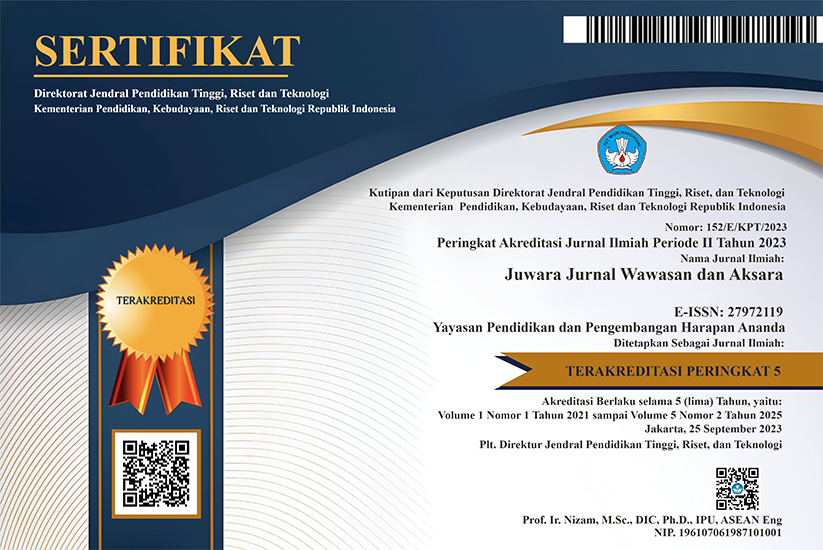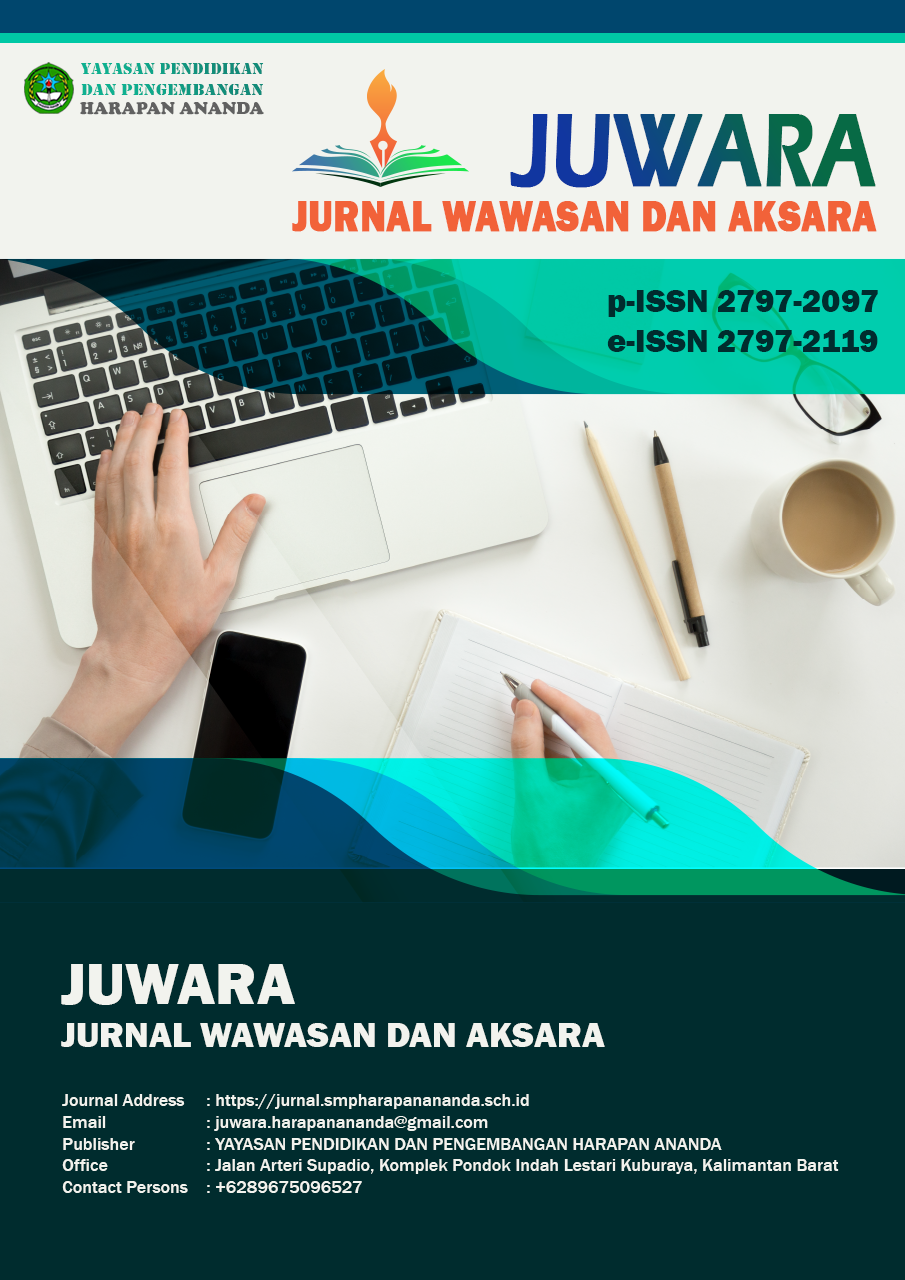Analisis Media Pembelajaran Berbasis Android Materi Ilmu Aqidah Mata Kuliah Pendidikan Agama Islam
DOI:
https://doi.org/10.58740/juwara.v1i2.31Keywords:
analisis kebutuhan, media pembelajaran, android, need analysis, learning mediaAbstract
Abstrak
Tujuan penelitian untuk menganalisis kebutuhan dalam penerapan media pembelajaran Ilmu Aqidah berbasis android. Metode penelitian menggunakan survei. Subjek penelitian mahasiswa semester II Program Studi Pendidikan Teknologi Informasi IKIP PGRI Pontianak. Teknik pengumpul data menggunakan komunikasi tidak langsung. Alat pengumpul data menggunakan angket. Teknik analisis data menggunakan analisis deskriptif. Hasil penelitian adalah: (1) Dari 65 responden, hanya 1 (satu) orang yang tidak memiliki smartphone dengan sistem operasi Android; (2) Sebanyak 65 responden (100%) setuju apabila materi ilmu aqidah menggunakan media pembelajaran berbasis android dengan berbagai alasan; dan (3) Kendala yang mungkin dihadapi jika media pembelajaran berbasis android diterapkan adalah responden belum memahami penggunaan media berbasis android sebesar 69,2% dan responden memiliki spesifikasi smartphone yang tidak mendukung sebesar 24,6%.
Abstract
The purpose of the study was to analyze the need for the application of android-based Aqidah learning media. The research method uses a survey. The research subjects were second semester students of the Information Technology Education Study Program, IKIP PGRI Pontianak. Data collection techniques using indirect communication. The data collection tool uses a questionnaire. The data analysis technique used descriptive analysis. The results of the study are: (1) Out of 65 respondents, only 1 (one) person does not have a smartphone with the Android operating system; (2) A total of 65 respondents (100%) agree that the material for aqidah uses android-based learning media for various reasons; and (3) Constraints that may be faced if android-based learning media are applied are respondents who do not understand the use of android-based media by 69.2% and respondents have smartphone specifications that do not support 24.6%.
References
Aulawi, dkk. 2017. Functional Need Analysis of Knowledge Portal Design in Higher Education Instutition. International Journal of Soft Computing, 12(2): 132-141.
Dale, E. 1946. The Cone of Experience in Audio-Visual Methods in Teaching. New York: Dyrden Pres.
Hariyadi, R. R., Fikri, I. A., & Herumurti, D. 2017. Navigasi Perangkat Bergerak di Lingkungan ITS Menggunakan Platform Wikitude. JUTI, 15(1): 26-34.
Kementerian Pendidikan dan Kebudayaan. 2015. Rencana Strategis Kementerian Pendidikan dan Kebudayaan 2015-2019. Jakarta.
Majid, N. A. A., Mohammed, H., & Sulaiman, R. 2014. Students’ Perception of Mobile Augmented Reality Applications in Learing Computer Organization. Procedia – Social and Behavioral Sciences, 176(2015): 111-116.
Muzid, S. & Munir, M. 2005. Persepsi Mahasiswa dalam Penerapan E-Learning sebagai Aplikasi Peningkatan Kualitas Pendidikan (Studi Kasus pada Universitas Islam Indonesia). Seminar Nasional Aplikasi Teknologi Informasi 2005 (SNATI 2005). ISSBN 979-756-061-6. Yogyakarta: A27-A34. 18 Juni 2005.
Smaldino, S. E., Heinich, R., Molenda, M., & Russell, J. D. 2002. Instructional Tecnology and Media for Learning (9th ed). New Jersey: Pearson.
Squire, K. D. & Jan, M. 2007. Mad City Mystery: Developing Scientific Argumentation Skills with a Place-based Augmented Reality Game on Handheld Computers. Journal of Science Education and Technology, 16(1): 5-29.
Haller, M., Billinghurst, M., & Thomas, B. H. 2007. Emerging Technologies of Augmented Reality: Interfaces and Design. Hershey Pa, London: IGI Global
Vallino, J. R. 1998. Interactive Augmented Reality. Rochester, New York: University of Rochester.
Downloads
Published
How to Cite
Issue
Section
License
Copyright (c) 2021 Umi Liwayanti

This work is licensed under a Creative Commons Attribution-NonCommercial 4.0 International License.
JUWARA: Jurnal Wawasan dan Aksara provides open access to anyone so that the information and findings in these articles are useful for everyone. This journal's article content can be accessed and downloaded for free, following the creative commons license used.




















